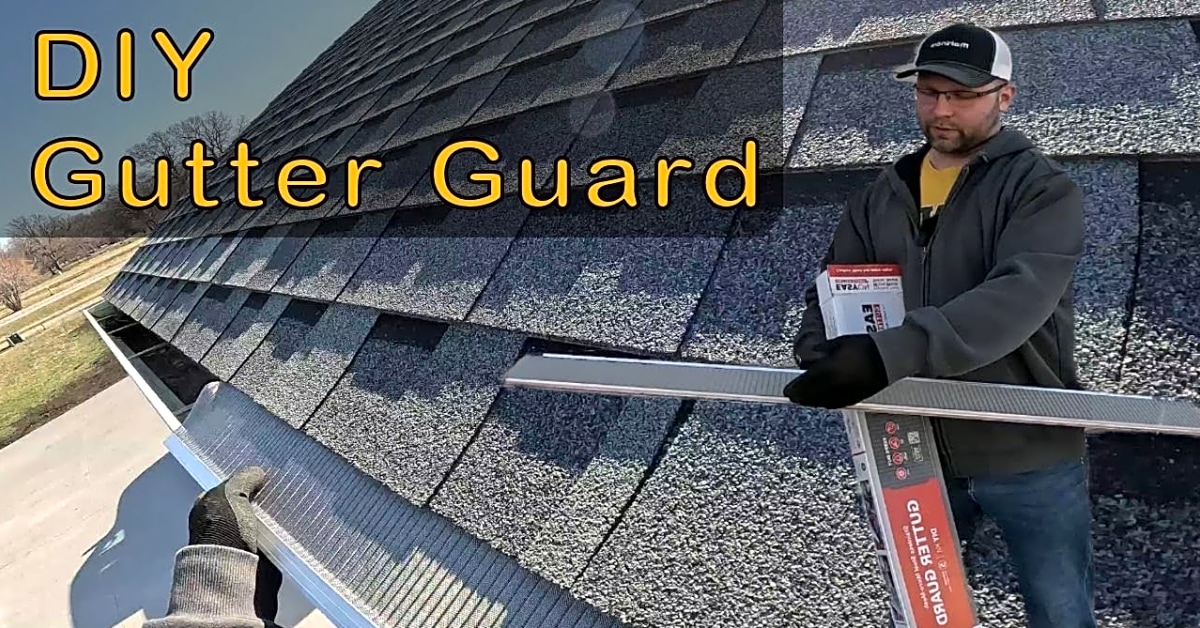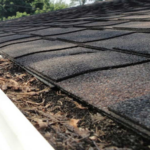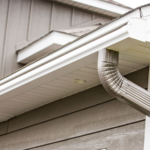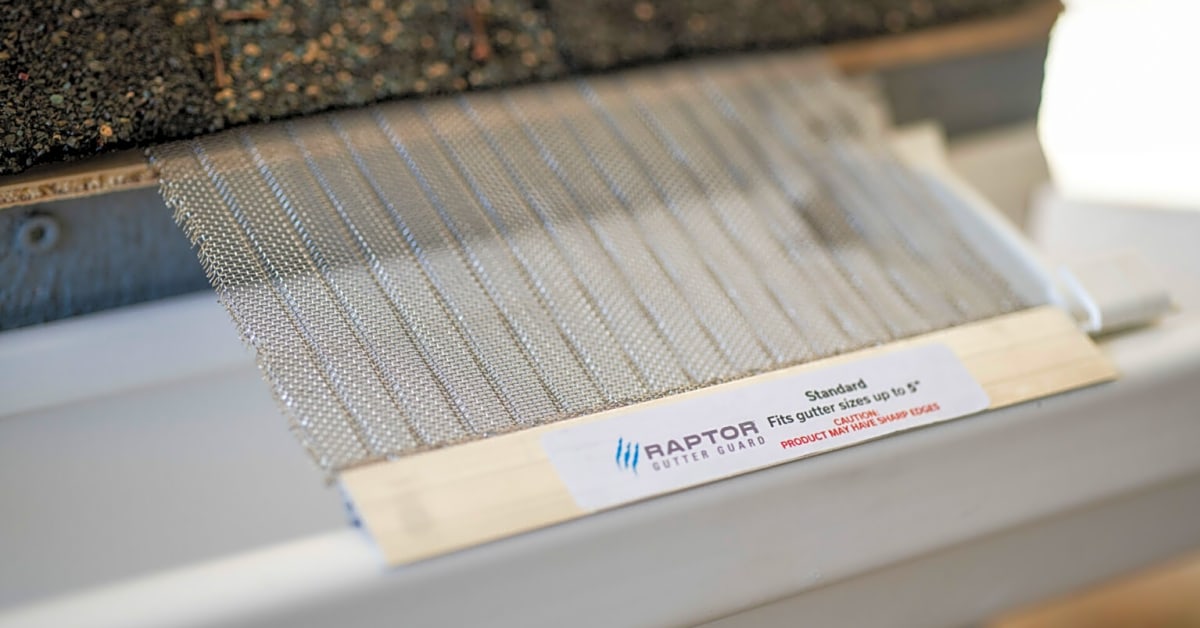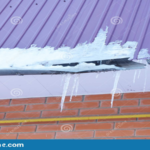Are you tired of constantly dealing with clogged gutters? Are you looking for a cost-effective solution to protect your home from water damage? Look no further, because we have the perfect solution for you – homemade gutter guards! In this step-by-step guide, we will walk you through the process of making your own gutter guards, saving you time and money. No more expensive professional installations or constantly buying new gutter guards. With our easy-to-follow instructions, you’ll have durable and effective gutter guards in no time. So let’s get started and learn how to make homemade gutter guards that will keep your gutters clean and your home protected.In this article, we will provide you with step-by-step instructions on how to make homemade gutter guards. Whether you are looking for an easy and cost-effective solution to protect your gutters from leaves and debris or you simply enjoy DIY projects, this guide is for you. We will cover the materials and tools needed, the different types of gutter guards, the benefits of using them, and the potential cost savings. By the end of this guide, you will have all the information you need to successfully install your own gutter guards. When it comes to making homemade gutter guards, there are a few key materials and tools that you will need to have on hand. These include wire mesh or plastic mesh, scissors or wire cutters, measuring tape, and a ladder for installation. The type of material you choose for your gutter guards will depend on your personal preference and budget. Wire mesh is a popular option as it is durable and can easily be cut to fit your specific gutter size. Plastic mesh is also a viable option and is typically more affordable than wire mesh. Once you have gathered your materials, you can begin the installation process. It is important to first clean out your gutters before installing the guards. This will ensure that they are free of any debris or buildup that could potentially clog the guards. Once your gutters are clean, you can begin measuring and cutting the mesh to fit inside the gutter. This is where your measuring tape and scissors or wire cutters will come in handy. Once the mesh is cut to size, you can simply place it inside the gutter and secure it in place with clips or screws. Now that you know how to make homemade gutter guards, let’s explore the different types available. Aside from wire and plastic mesh, there are also foam gutter guards, brush guards, and reverse curve guards. Foam gutter guards are made of porous foam that allows water to flow through while blocking debris. Brush guards consist of bristles that are placed inside the gutter to prevent leaves and debris from entering. Reverse curve guards have a curved design that allows water to flow into the gutter while keeping out debris. Each type of gutter guard has its own unique benefits, but all are effective in preventing clogs and protecting your gutters. One of the main benefits of using homemade gutter guards is the potential cost savings. Purchasing and installing gutter guards can be expensive, but making your own can save you a significant amount of money. Additionally, installing gutter guards can also save you time and effort in the long run, as they will reduce the need for frequent gutter cleaning. With regular maintenance, homemade gutter guards can last for several years, making them a worthwhile investment for any homeowner. In conclusion, making homemade gutter guards is a simple and cost-effective way to protect your gutters from clogs and debris. With the right materials and tools, anyone can successfully install their own gutter guards. We hope this guide has provided you with all the information you need to get started on your DIY gutter guard project. Happy crafting!
Materials and Tools
Before getting started, gather the following materials and tools:
- Gutter guard material (such as mesh or foam)
- Scissors
- Measuring tape
- Pencil
- Gloves
Cost Savings
In addition to being a cost-effective solution, making homemade gutter guards can also save you money in the long run. While the initial cost of purchasing gutter guards may seem expensive, they can save you money by reducing the need for professional gutter cleaning services. This means you won’t have to spend money on hiring someone to clean your gutters multiple times a year. By investing a little time and effort into making your own gutter guards, you can save yourself from the recurring expense of professional cleaning services. Additionally, if you already enjoy DIY projects, making homemade gutter guards can be a fun and satisfying way to save money while protecting your gutters.
Benefits of Gutter Guards
Gutter guards are an essential addition to any home’s gutter system. Not only do they protect your gutters from clogging with leaves and debris, but they also have many other benefits that can save you time and money in the long run.
One of the main benefits of gutter guards is that they prevent clogging in your gutters. Clogged gutters can lead to water buildup, which can cause damage to your home’s foundation, walls, and roof. This can result in costly repairs and maintenance. By installing gutter guards, you can avoid these issues and protect your home from potential water damage.
In addition to preventing clogs, gutter guards also reduce the need for frequent gutter cleanings. Without gutter guards, leaves and debris can quickly accumulate in your gutters, requiring you to clean them out multiple times a year. This not only takes up your valuable time but also requires you to spend money on professional cleaning services or equipment. With gutter guards, you can significantly decrease the frequency of gutter cleanings, saving you time and money in the process.
Types of Gutter Guards
use HTML structure with only for main keywords and
for paragraphs, do not use “newline character”
When it comes to protecting your gutters from leaves and debris, there are various options available on the market. One of the most popular choices is gutter guards, which act as a barrier to prevent clogs and keep your gutters functioning properly.
There are three main types of gutter guards: covers, screens, and inserts. Each type has its own advantages and disadvantages, so it’s important to consider your specific needs and budget when choosing the right one for your gutters.
Covers: These are solid pieces that cover the top of your gutters, allowing water to flow through while keeping out debris. They can be made of various materials such as aluminum, plastic, or mesh. The main advantage of covers is that they provide excellent protection against large debris like leaves and twigs. However, they can be more expensive than other types of gutter guards and may require professional installation.
Screens: Similar to covers, screens also sit on top of your gutters but have small holes or perforations that allow water to pass through while blocking debris. Screens are typically made of metal or plastic and are more affordable than covers. However, they may not be as effective at keeping out smaller debris like pine needles.
Inserts: These are foam or brush-like inserts that fit inside your gutters and act as a barrier to prevent debris from entering. Inserts are the most cost-effective option but may not be as durable as covers or screens.
No matter what type you choose, gutter guards can greatly reduce the need for frequent gutter cleaning and help extend the lifespan of your gutters. Consider your specific needs and budget to determine the best type of gutter guard for your home.
Making homemade gutter guards is a cost-effective solution to protect your gutters from debris. With the right materials and tools, you can easily install them yourself and enjoy the benefits of clog-free gutters.
